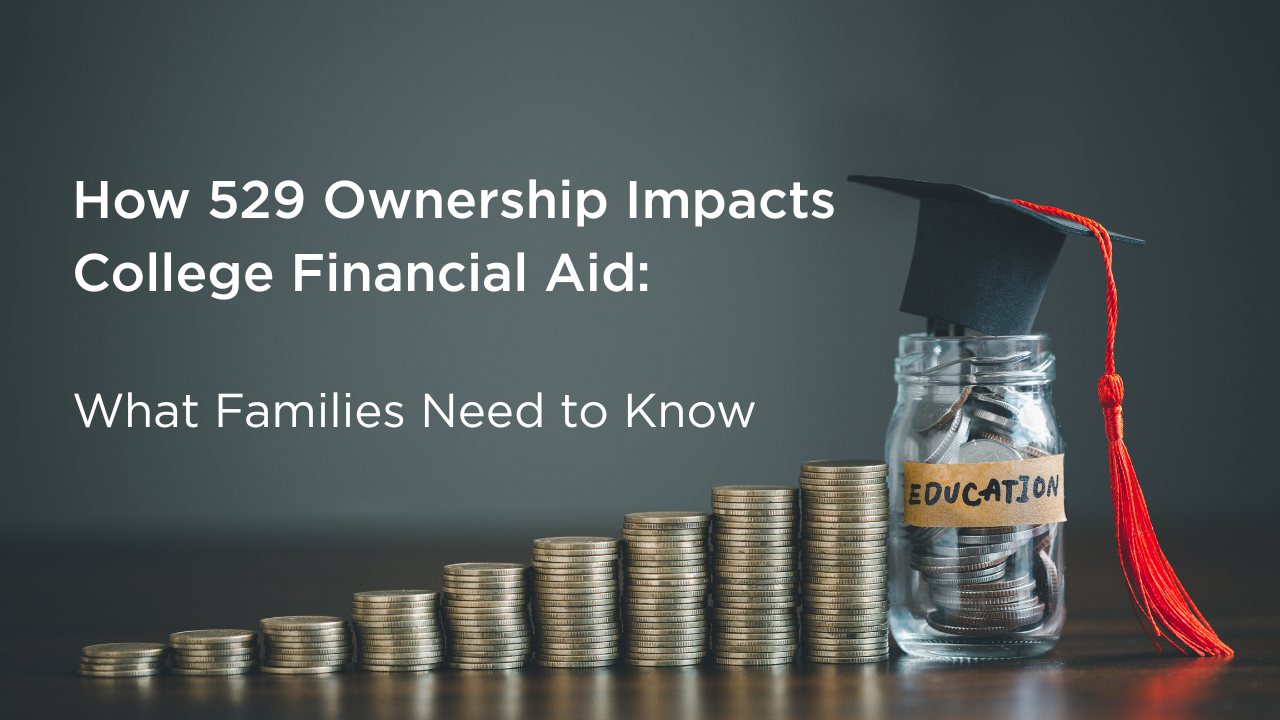

We talk about 529 accounts all the time — tax-free growth, qualified education expenses, rollover options, and the long-term benefits of starting early.
But one part of the conversation is rarely addressed:
This came up today with a client whose child is applying for college scholarships and need-based aid. It was a reminder that ownership can matter just as much as contribution strategy.
Below is a clear, structured breakdown of how different ownership types impact aid.
Commonly used and the most straightforward for aid planning.
FAFSA Treatment
Withdrawals
Overall Impact
Low. Parent-owned plans are generally considered aid-friendly.
Often created when a UGMA/UTMA account is converted into a 529.
FAFSA Treatment
Withdrawals
Overall Impact
Low, and effectively the same as parent-owned plans under current FAFSA rules.
Historically the most complex category, but recently changed in a positive way.
Previous Rules
New FAFSA Rules (2024 and beyond)
Overall Impact
Zero impact on FAFSA. These accounts can now be highly advantageous when planned correctly.
This is the one area where treatment varies by institution.
CSS Treatment
Overall Impact
Case-specific. Families should ask each institution how various 529 ownership structures are evaluated.
Use parent-owned funds first
These dollars have the most predictable and lowest aid impact.
Use grandparent-owned funds strategically
Be intentional about timing
Withdrawals from the wrong owner at the wrong time can reduce eligibility for need-based aid.
Align ownership with strategy
The structure of the account should support — not undermine — the family’s financial aid and college funding plan.
529 plans provide excellent tax benefits, but the planning shouldn’t end there.
Ownership, timing, and the type of college all influence how much aid a student may receive.
Families who coordinate these elements thoughtfully are better positioned to maximize both financial aid opportunities and the value of their 529 savings.
IRS.gov – https://www.irs.gov/newsroom/529-plans-questions-and-answers
Start a conversation to learn more about who we are and what we do. Our team is ready to make an impact.
Contact Us